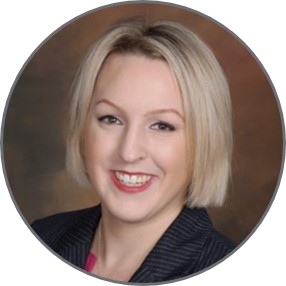COVID-19 Has Practices Seeking Lower Risk, Greater Flexibility in Radiologist Staffing
When COVID-19 forced medical facilities to delay elective procedures across the country, imaging volume plummeted over 50% for many providers almost...

Remote radiologist jobs with flexible schedules, equitable pay, and the most advanced reading platform. Discover teleradiology at vRad.

Radiologist well-being matters. Explore how vRad takes action to prevent burnout with expert-led, confidential support through our partnership with VITAL WorkLife. Helping radiologists thrive.

Visit the vRad Blog for radiologist experiences at vRad, career resources, and more.

vRad provides radiology residents and fellows free radiology education resources for ABR boards, noon lectures, and CME.

Teleradiology services leader since 2001. See how vRad AI is helping deliver faster, higher-quality care for 50,000+ critical patients each year.

Subspecialist care for the women in your community. 48-hour screenings. 1-hour diagnostics. Comprehensive compliance and inspection support.

vRad’s stroke protocol auto-assigns stroke cases to the top of all available radiologists’ worklists, with requirements to be read next.

vRad’s unique teleradiology workflow for trauma studies delivers consistently fast turnaround times—even during periods of high volume.

vRad’s Operations Center is the central hub that ensures imaging studies and communications are handled efficiently and swiftly.

vRad is delivering faster radiology turnaround times for 40,000+ critical patients annually, using four unique strategies, including AI.
.jpg?width=1024&height=576&name=vRad-High-Quality-Patient-Care-1024x576%20(1).jpg)
vRad is developing and using AI to improve radiology quality assurance and reduce medical malpractice risk.

Now you can power your practice with the same fully integrated technology and support ecosystem we use. The vRad Platform.

Since developing and launching our first model in 2015, vRad has been at the forefront of AI in radiology.

Since 2010, vRad Radiology Education has provided high-quality radiology CME. Open to all radiologists, these 15-minute online modules are a convenient way to stay up to date on practical radiology topics.

Join vRad’s annual spring CME conference featuring top speakers and practical radiology topics.

vRad provides radiology residents and fellows free radiology education resources for ABR boards, noon lectures, and CME.

Academically oriented radiologists love practicing at vRad too. Check out the research published by vRad radiologists and team members.

Learn how vRad revolutionized radiology and has been at the forefront of innovation since 2001.

%20(2).jpg?width=1008&height=755&name=Copy%20of%20Mega%20Nav%20Images%202025%20(1008%20x%20755%20px)%20(2).jpg)

Visit the vRad blog for radiologist experiences at vRad, career resources, and more.


Explore our practice’s reading platform, breast imaging program, AI, and more. Plus, hear from vRad radiologists about what it’s like to practice at vRad.

Ready to be part of something meaningful? Explore team member careers at vRad.
2 min read
 Roberta Monte
:
November 20, 2018
Roberta Monte
:
November 20, 2018

Hospitals and clinics are integrating more tele-services into their everyday protocols as the telemedicine model continues to demonstrate the potential for them to deliver better, more cost-effective care. However, while new protocols for providing quality care are rapidly evolving, many organizations continue to follow internal credentialing bylaws and standards developed to support a dated paradigm.
By establishing standards that differentiate between tele-providers and traditional onsite care providers, many medical staff offices are reducing administrative time and expense for credentialing. Following are some things every hospital and clinic should consider to bring their credentialing practices into the telemedicine age.
Credentialing is designed to protect patients and staff by ensuring each facility has taken steps to minimize threats to safety – containing the risk of infection, prescribing and managing treatment options effectively, responding appropriately to emergent situations, etc. Traditionally, credentialing bylaws and standards are written under the assumption that each physician, nurse and administrator is at times occupying and maintaining the same physical space as patients.
Telehealth professionals deliver service from remote locations. Teleradiologists never set foot in a hospital. As store-and-forward practitioners, they interact electronically. Certain aspects of medical histories – critical to consider for onsite physicians – are irrelevant in the absence of physical contact (for example: PPD tests). Further, it is unnecessary for a tele-provider to be schooled and practiced in the onsite procedures each clinic follows to maintain safety at their facility.
Medical staff offices are beginning to recognize the need to update bylaws and standards to distinguish between the requirements for onsite and telemedicine professionals. While onsite personnel may still necessitate primary source verification (PSV), much of the burden for authenticating tele-providers may be offloaded to telehealth organizations through credentialing by proxy.
At vRad, our legal counsel often work with clients interested in drafting language into their bylaws that enables them to take advantage of the benefits of credentialing by proxy. They bring with them an understanding of federal standards, as well as varying requirements across all 50 states.
I should note that there are currently three states that do not allow the use of credentialing agreements: Arkansas, Massachusetts and New York. Legislation is pending in Massachusetts, so that door may be opened soon.
Once your medical staff office is prepared to allow credentialing by proxy, there are some important components to consider before reaching agreement with individual providers.
The tele-provider must comply with standards comparable to the expectations of your organization. vRad meets or exceeds the standards set forth by the Centers for Medicare & Medicaid Services (CMS) and the Joint Commission, supporting compliance with guidelines at the federal level and within each state.
You need ready access to individual records for every member of your staff, both onsite and working remotely. The advanced vRad system provides clients complete online access to verification data for each of their teleradiologists, 24 hours a day. Through their client portal they can view detailed verification data, including a license, a profile, or an educational certificate.
Ideally, the tele-partners’ system integrates seamlessly into your processes without disruption. Flexibility is central to the design of the vRad platform, enabling us to connect with hundreds of hospitals and clinics across all 50 states. We adapt our system to match the needs of individual facilities, from changing verbiage to reflect organizational preferences to expanding or restricting file access based on discrete user criteria.
If your organization is ready to make the move to more efficient, effective credentialing for telemedicine professionals, we’re ready to help. Contact me to discuss your situation. We’ll put our team to work on a plan to address your needs.
.png)
When COVID-19 forced medical facilities to delay elective procedures across the country, imaging volume plummeted over 50% for many providers almost...
-1.png)
One of the cornerstones of the Protecting Access to Medicare Act of 2014 was the development of an appropriate use criteria (AUC) program that...

Originally published by Michael Walter on Radiology Business Imaging providers are continuously filling holes in their radiologist coverage schedule....
vRad (Virtual Radiologic) is a national radiology practice combining clinical excellence with cutting-edge technology development. Each year, we bring exceptional radiology care to millions of patients and empower healthcare providers with technology-driven solutions.
Non-Clinical Inquiries (Total Free):
800.737.0610
Outside U.S.:
011.1.952.595.1111
3600 Minnesota Drive, Suite 800
Edina, MN 55435